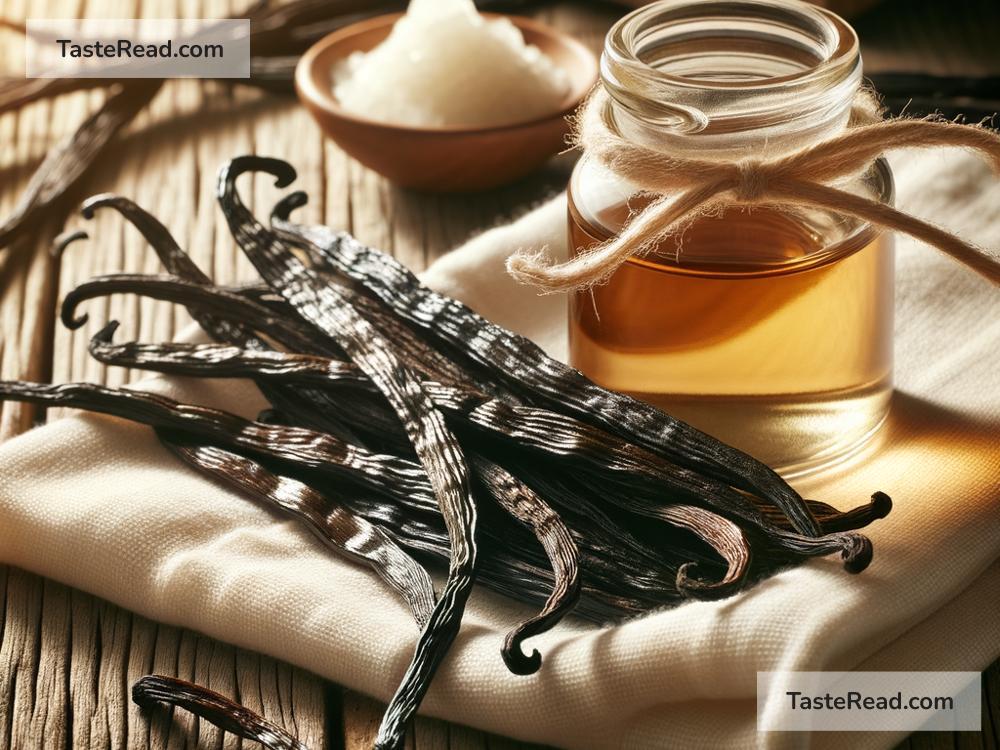How Vanilla Became a Symbol of Purity
Vanilla is one of the most popular flavors in the world. Whether in ice cream, cakes, or perfumes, people love the sweet and comforting taste and smell of vanilla. But did you know that vanilla is often seen as a symbol of purity? You might have heard people say things like “plain vanilla” to describe something simple or unadorned. So, how did vanilla earn this reputation? Let’s dive into its history and cultural significance to find out.
Where Vanilla Comes From
Vanilla comes from the seed pods of the vanilla orchid. This special plant originally grows in tropical regions like Mexico. For thousands of years, the Totonacs, who lived on the east coast of Mexico, were the first people to cultivate vanilla. Later, the Aztecs adopted vanilla and used it to flavor their chocolate drinks, which they considered sacred.
When Spanish explorers arrived in Mexico in the 1500s, they were introduced to vanilla. They brought it back to Europe, where it quickly became a favorite among royalty and the wealthy. Vanilla had a luxurious appeal because it was rare and expensive. For a long time, it could only be grown in Mexico, since the vanilla orchid needed a specific type of bee to pollinate its flowers.
Why Vanilla Is Linked to Simplicity
Vanilla’s connection to purity partly comes from its delicate and natural flavor. Unlike some stronger or more complicated spices, vanilla is soft, sweet, and comforting. Over time, people began to associate vanilla with simplicity and wholesomeness. For example, vanilla ice cream became one of the earliest types of ice cream to be widely enjoyed. Its pale color and mild flavor were seen as pure and uncomplicated.
The term “plain vanilla” emerged to describe something basic or straightforward. While this phrase is sometimes used to mean “ordinary,” it doesn’t detract from the idea that vanilla, in its pure form, is dependable and classic. People see vanilla as an honest flavor—something you can count on when you don’t want anything overly fancy or complex.
Purity in Appearance
Vanilla also gained its reputation as a symbol of purity because of its visual qualities. The extract itself may be dark brown, but foods flavored with vanilla, like vanilla ice cream or custard, are often white or pale in color. White is commonly associated with cleanliness, innocence, and simplicity in many cultures. This made vanilla-flavored desserts look elegant and pure, reinforcing the idea of vanilla as a wholesome choice.
When people think of vanilla-flavored products, they often picture something clean and light, free of artificial additives. This ties back to the idea that vanilla represents purity—not just of flavor, but of a broader ideal of naturalness and simplicity.
Vanilla in Perfumes and Products
Vanilla isn’t just a flavor; it’s also a popular scent. The comforting smell of vanilla is used in perfumes, candles, and skin products. The scent is often described as soft, warm, and soothing, evoking feelings of safety and happiness. This comforting quality further builds on the idea of purity because it creates a sense of emotional peace.
Companies often use vanilla in their products to make them feel more natural and gentle. For example, a “vanilla-scented lotion” might suggest simplicity and care, appealing to customers who desire products that feel clean and unpretentious. Vanilla’s ability to soothe both the nose and the soul contributes to its image as pure and uncomplicated.
Historical and Cultural Connections to Purity
Over time, vanilla gained symbolic meaning in cultures around the world. In Europe, where vanilla became highly prized after its introduction, it was a rare and expensive spice. Its rarity made it seem special and uncontaminated. Only the wealthy could afford vanilla, which added to its reputation as something “pure” in value.
Modern food trends have also built on this legacy. In recipes and marketing, vanilla is often described as “natural” or “authentic.” People continue to associate vanilla with purity because it is widely used in classic, timeless recipes like custards, cakes, and creams—dishes that rely on minimal ingredients to highlight their natural flavors.
Vanilla Today: More Than Just “Plain”
While some people still think of vanilla as plain and ordinary, it’s far from boring. Vanilla is one of the most complex flavors in the world! Chemically, it contains around 250 compounds that create its unique taste and aroma. Pure vanilla extract is highly sophisticated, proving that simplicity can also be rich and exciting.
Vanilla continues to symbolize purity because it reminds us of the beauty in simplicity. It doesn’t need to be flashy or overwhelming to be beloved. Instead, it works quietly to bring comfort, flavor, and elegance to the things we enjoy. Whether in ice cream, perfume, or candles, vanilla remains a classic favorite—a true testament to the idea that purity and simplicity will always have a place in our lives.
Vanilla might be simple, but it’s undeniably special. The next time you enjoy a scoop of vanilla ice cream or light a vanilla-scented candle, remember its long history and enduring reputation as a symbol of purity. This humble orchid pod has managed to charm people for centuries by staying true to its roots: natural, comforting, and pure.


